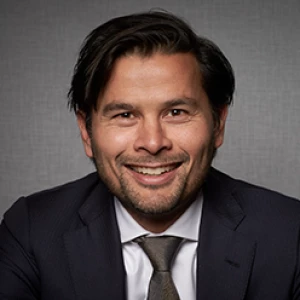Here’s a complaint we’re hearing more and more frequently from client CEOs. “I’ve got a bunch of agile pilots going. Many are actually working. I’m seeing results, but they’re not transforming the company. They’re not having the full impact I expected.”
There’s no question that making the transition to agile ways of working, especially at scale in a large and complex organization, is a tall order. Agile transformations that stall or fail to reach the transformational tipping point are common.
Successful lighthouse projects can establish momentum and achieve scale as the results roll in and the organization gains understanding of what agile can accomplish. But the extra push from the CEO—and the leadership team—can play a crucial role in getting over the inevitable hurdles. On the basis of our experience, we have identified five things that successful leaders do consistently—and consistently well—to keep their transformations on track.
We have identified five things that successful leaders do consistently—and consistently well—to keep their transformations on track.
Start with Why
New ways of working are not goals in themselves: they are a means to an end. To mobilize the troops and keep everybody on track when times are rough, leaders articulate why they want to change: What are the objectives and desired outcomes? Changing is hard work, and in the face of difficulty, people tend to gravitate toward the old and familiar ways. Moving beyond the tipping point in agile transformations requires a shared conviction that continuing the way the company has always done things is not good enough. Setting new standards in customer service, getting products to market before competitors, disrupting the industry, achieving step changes in productivity, and winning the war for talent are all examples of objectives and outcomes that organizations can rally behind. People need to know why the new ways of working are critical.
Adopt the Principles, Adapt the Practices
At its core, agile is a set of cultural values, principles, and behaviors, rather than a set of specific practices. Adopting values, principles, and behaviors can be done successfully only by shaping the context in which people work.
Depending on the nature of the underlying work, the contextual solutions will differ. New ways of working on the interface of business and IT will likely include elements of, for example, agile scrum and design thinking, while customer service and operations activities may benefit more from lean or the self-management practices of Holacracy.
For an individual team or a startup, specific practices and ceremonies go a long way toward leading people to “live” the aspired-to cultural values and principles. But spreading values and principles across hundreds of teams in a large and complex organization requires addressing almost all elements of the operating model to set the context in which agile behaviors can take hold and thrive. This level of change almost certainly needs to be driven by the CEO, as it often includes widespread alterations in such areas as governance and funding models, organization structures, incentives and performance management, location and sourcing strategy, measurement frameworks, and technological enablers.
Change Your Leadership
Nothing leads like an example. Leaders should push themselves to adopt agile ways of doing things and publicly demonstrate their own changing behaviors. The public aspect is important. To signal change at one company, executives in certain divisions gave up their offices so that the company could create team rooms. At another, executive team members committed to holding weekly “town hall” meetings in the company café. In addition to providing general business updates and answering questions at these meetings, individual executives spoke about their personal-development agendas.
Getting experienced leaders to change their behaviors is not easy. After all, agile behaviors are not the behaviors that propelled most of them into senior leadership positions in the first place. Many leaders find that they are required to unlearn what made them successful, and for more than a few, this is a bridge too far. CEOs need to recognize that agile transformations almost certainly require at least some changes in the composition of the leadership team. These are tough decisions because the executives in question haven’t done anything wrong. Still, making the necessary changes has two benefits. Most important, it puts the people who will help drive the transformation into critical roles. It also sends an unmistakable message to others who might be sitting on the fence of change: they need to get with the program before they encounter a similar fate.
Align to Empower
Small, cross-functional, empowered teams are at the core of every agile organization. The ability to act autonomously spurs ownership and creativity, enabling teams to make quick decisions and move fast. But a high degree of autonomy works only when there is also a high degree of alignment in and among teams. A key role of agile leaders is to ensure strong alignment around overall company purpose, strategy, and priorities. Leaders need to communicate their intent, explaining both the why and the what, and they need to let go, releasing their teams to figure out how to address their specific assigned challenge. The more alignment that leaders are able to establish, the more autonomy they can afford to give. Leaders can spread and reinforce alignment in a variety of ways that include modeling their own behavior and strengthening governance mechanisms, measurement frameworks, and performance management practices.
Leaders need to communicate their intent, explaining both the why and the what.
Learn and Adapt—at Speed
Agile puts a premium on feedback and lessons learned: adapting to change is more important than following a plan. This rule applies even to the agile transformation itself. Of course, the transformation must be well thought through and carefully planned, but leaders must also be open to modification and adjustment along the way. Inevitably, there will be setbacks and challenges, but strong leaders are the ones who have the ability to learn, adapt, and change course when things go awry.
Transformations, which are often described as journeys, can take two or three years. We are seeing more CEOs tighten up that time frame—in some instances to less than a year. The biggest counterweight to resistance is momentum, and nothing builds momentum like speed. Like loosening controls, moving fast can seem risky. But the bigger risk to the transformation lies in not changing fast enough.








